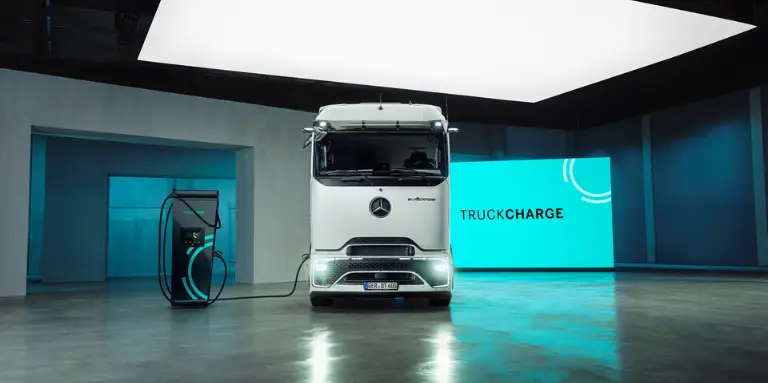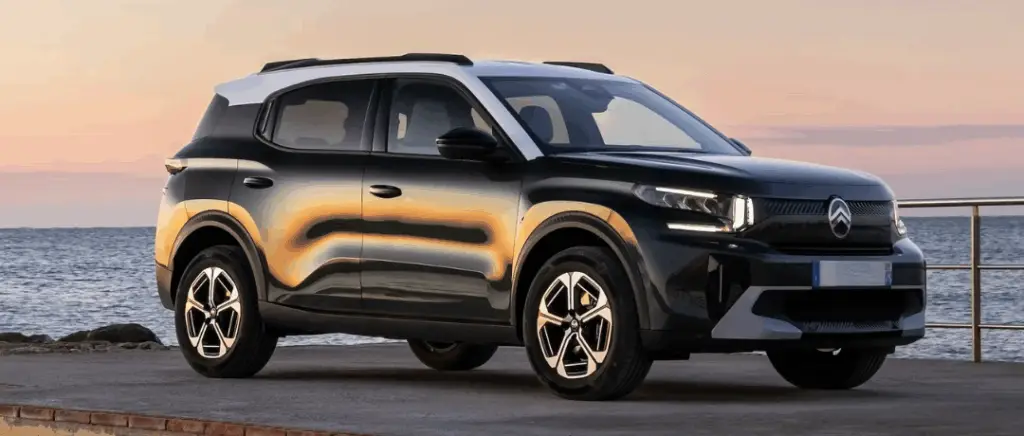What are the logistical challenges involved in installing charging points for heavy goods vehicles?
The electrification of HGVs means that charging infrastructure will have to undergo a radical transformation, which will have to overcome technical, financial and regulatory obstacles. Deploying charging stations tailored to the specific needs of heavy goods vehicles raises three major issues:
- The search for strategic sites, combining proximity to main roads, land availability and technical capacity;
- Adaptation of electricity grids, requiring massive investment to support power in excess of 800 kW;
- The profitability of the installations, dependent on economic models that are still fragile despite public subsidies.
Why is finding sites to install charging stations a major challenge?
There are a number of structural and operational obstacles to the installation of charging points for electric heavy goods vehicles:
- High technical requirements: lorries need ultra-fast charging stations (up to 800 kW) and robust electrical infrastructures, requiring costly connections and specific civil engineering works.
- A critical strategic location: sites must be located along major trunk roads, with a grid every 60 to 100 km according to the AFIR regulations, while taking account of actual freight flows to avoid under-utilisation.
- Colossal financial investments: the deployment of a pan-European network represents billions of euros, requiring public-private partnerships and innovative business models to make the installations profitable.
- Administrative complexity: the time it takes to obtain permits and local regulatory constraints often slow down projects, particularly for connections to the high-voltage electricity grid.
- Competition for space: suitable land (close to motorways, capacity for long vehicles) is limited, exacerbating tensions between logistics players and local authorities.
This multi-dimensional challenge explains why the current network has fewer than 1,000 charge points in Europe, a far cry from the 35,000 needed by 2030 to meet climate targets.
What is the TruckCharge recharging network for electric trucks?

The recharging network TruckCharge represents a strategic initiative by Daimler Truck to establish a recharging infrastructure specifically adapted to the needs of electric trucks. This announcement, which provides for the deployment of 3,000 charging points by 2030underlines the German carmaker's commitment to facilitating the transition to zero-emission heavy-duty mobility.
TruckCharge is positioned as a global solution for electric truck fleet operators, offering a reliable and accessible recharging network. Key features of this initiative include:
- An infrastructure dedicated to heavy goods vehicles : Unlike charging points for light vehicles, TruckCharge points will be designed to accommodate the specific dimensions and energy requirements of electric trucks. This includes spacious locations for manoeuvring and high charging power to minimise downtime.
- A network expanding across Europe: The target of 3,000 charging points by 2030 reflects a pan-European ambition to cover the main transport routes and key logistics areas. This extensive coverage is essential to reassure hauliers about the viability of electrifying their fleets over long distances.
- Fast, intelligent recharging solutions: TruckCharge will incorporate advanced charging technologies, enabling rapid recharging to optimise journey times and vehicle productivity. Intelligent charging management solutions will also be available to optimise energy consumption and reduce operating costs.
- Potential integration with other services: As well as simply supplying charging stations, TruckCharge could eventually incorporate other value-added services for hauliers, such as route planning solutions optimised for electric vehicles, real-time information on the availability of charging stations and simplified payment options.
By developing its own recharging network, Daimler Truck aims to remove one of the main obstacles to the widespread adoption of electric trucks the lack of suitable and reliable recharging infrastructure. TruckCharge is therefore a central element in the manufacturer's strategy for the future of sustainable, electrified road transport.
When will the TruckCharge network be launched and how will it work?
Daimler Truck has unveiled crucial details about the roll-out and operation of its future high-power charging network for electric trucks, dubbed TruckCharge. The German company aims to bring its 3,000 charging points into service by 2030, marking a significant step forward in the infrastructure needed for the mass adoption of electric vehicles. electric trucks.
Daimler Truck has provided the following key information on the launch schedule and operating mode of TruckCharge:
- Progressive launch : The TruckCharge network will be rolled out gradually. Daimler Truck has not yet specified an overall launch date, but has indicated that the first pilot sites should be operational within the next few years, preceding the acceleration of the roll-out towards the 2030 target.
- Strategic location : The recharging points will be strategically located along Europe's main transport routes, close to logistics centres and industrial zones, to meet the specific needs of consumers. transporters.
- High charging power : The TruckCharge network will be equipped with High-Power Charging (HPC) stations, which will considerably reduce the amount of downtime required to recharge vehicles. electric truck batteries. The aim is to make charging as fast and efficient as possible for transport operations.
- Accessibility and interoperability : Daimler Truck plans to make the TruckCharge network available to fleets of different makes of electric commercial vehiclesThis will promote interoperability and the widespread adoption of the electric mobility for freight transport. Access details (subscriptions, fee-for-service, etc.) will be announced at a later date.
- Additional services : In addition to simple recharging, Daimler Truck plans to integrate additional services at TruckCharge sites, such as rest areas for drivers and potential maintenance services, to optimise the overall experience for TruckCharge users. zero-emission trucks.
- Renewable energy : The company is underlining its commitment to sustainability by aiming to power the TruckCharge network with electricity from renewable sources, thereby contributing to an overall reduction in greenhouse gas emissions.carbon footprint from electric road transport.
In conclusion, although the precise launch date of the TruckCharge network has yet to be determined, Daimler Truck's progressive and strategic approach, focusing on high charging power, accessibility and sustainability, represents a significant step forward in the charging infrastructure needed to support the growth of the electric trucks in Europe. This network is playing a crucial role in the transition to a cleaner, more sustainable freight transport.
How will Daimler Truck involve its dealers and customers in the development of its network?
Daimler Truck recognises the crucial importance of working closely with its partners to ensure the successful deployment of its electric truck charging infrastructure. The company plans to involve its dealers and customers in a number of strategic initiatives:
- Partnerships with dealers : Daimler Truck dealers play a central role in establishing and maintaining the charging network. They will be encouraged and supported to install charging points at their sites, providing convenient access points for their customers' fleets. This approach capitalises on the expertise and existing geographic footprint of the Daimler Truck distribution network.
- Integrated services : Daimler Truck intends to offer charging solutions as part of its overall service offering. This could include maintenance contracts for charging points, training for transport company staff in the use and management of electric charging, and optimised energy management solutions for electric vehicle fleets.
- Consultation and customer feedback : The company plans to actively involve its customers in the network development process. This could take the form of regular consultations to identify specific recharging needs, gather feedback on existing infrastructure and adapt future deployment in line with actual usage.
- Customised charging solutions : Daimler Truck could also offer customised recharging solutions for customers with specific needs, such as installing charging points at their own logistics sites or mobile recharging solutions for operations requiring greater flexibility.
- Incentive and support programmes : To encourage the adoption of electric charging and the involvement of its partners, Daimler Truck could set up financial or technical incentive schemes for the installation of charging points, as well as training and awareness-raising initiatives on the benefits of electrifying freight transport.
By closely integrating its dealers and customers in the development of its recharging network, Daimler Truck aims to create a robust infrastructure, adapted to the specific needs of the electric transport sector and promoting a smooth transition to more sustainable mobility. The involvement of these key players is seen as a decisive factor in achieving its ambitious target of 3,000 charging points by 2030.
What is Daimler Truck's commitment to electric trucks by 2030?
Daimler Truck, a major player in the commercial vehicle sector, has a clear and significant ambition for the electrification of its truck range. The German company recently unveiled a major plan to establish a substantial recharging infrastructure to support the deployment of its electric trucks over the long term. Daimler Truck's main commitment between now and 2030 is to set up a network of 3,000 high-performance recharging points dedicated to electric heavy goods vehicles.
This commitment is broken down into several strategic areas:
- Development of a clean recharging network : Daimler Truck intends to deploy these charging points at strategic locations such as customer depots, logistics platforms and along major European roads. The aim is to facilitate the transition to electric mobility for its customers by offering them fast, reliable access to recharging.
- Strategic partnerships : To achieve this ambitious goal, Daimler Truck plans to work with a range of partners, including energy suppliers, charging point operators and logistics companies. These collaborations will accelerate the deployment of the infrastructure and ensure its interoperability.
- Integrated charging solutions : As well as simply deploying charging points, Daimler Truck is committed to offering intelligent, integrated charging solutions tailored to the specific needs of electric truck fleet operators. This includes charging management tools, optimised route planning systems and maintenance services.
- Accelerating the supply of electric vehicles: This massive investment in recharging infrastructure comes at a time when Daimler Truck is stepping up the development and marketing of electric trucks. The company's ambition is to offer a complete range of zero-emission vehicles to meet the different needs of road transport.
In conclusion, Daimler Truck's commitment to electric trucks by 2030 is demonstrated by significant investment in a large-scale recharging network, supported by strategic partnerships and an ever-expanding range of electric vehicles. This initiative demonstrates Daimler Truck's commitment to playing a leading role in the energy transition in the freight transport sector.
What is Daimler Truck's objective for electric truck charging points?
Daimler Truck is aiming to close the gap in charging infrastructure for electric heavy goods vehicles in Europe, with a plan structured around several key areas:
- Deploying 3,000 fast charging points by 2030 as part of its semi-public TruckCharge network, in response to the 35,000 high-power (800 kW+) charging points deemed necessary by ACEA to meet European climate targets.
- Optimising the use of existing infrastructure by allowing customers (dealers, logistics providers) to open up their kiosks to third parties via a pay model, thereby generating additional income while increasing the density of the network.
- Complement public infrastructures, in particular those of Milence (a joint venture with Traton and Volvo), which plans to have 1,700 public charging points by 2027.
- Offering a turnkey solution incorporating advice, equipment (Alpitronic kiosks), digital booking/payment tools and access via the Mercedes ServiceCard (28 countries covered).
This strategy responds to a twofold challenge: making hauliers' investments profitable while accelerating the adoption of electric trucks through optimised territorial coverage.
Why is charging infrastructure for heavy goods vehicles essential to the energy transition?
The electrification of heavy goods vehicles is a central pillar in the decarbonisation of road transport, but its success depends directly on the deployment of a suitable infrastructure. Here are the key reasons why this is a strategic issue:
- Reducing CO₂ emissions Freight transport accounts for almost 10 % of France's national emissions. Electric trucks, combined with high-power charging stations, can drastically reduce the sector's carbon footprint.
- Accelerating the technological transition Without a dedicated recharging network, hauliers are still constrained by the need to keep their vehicles on the road.autonomy batteries and dependence on private facilities. Public infrastructures enable fleets to extend their range.
- Support for regulatory objectives France aims to have 400,000 recharging points open by 20301The EU is imposing a dense territorial network via the regulation on alternative fuels.
- Optimising operating costs Fast charging stations (up to 240 kW) reduce truck downtime, making investments in electric fleets more profitable.
- Adapting to specific technical requirements Heavy goods vehicles require stations capable of supplying power equivalent to that of 7 private vehicles at the same time, which means upgrading existing electricity networks.
Key issue: The French roadmap calls for a 44 % reduction in emissions from heavy goods vehicles by 2040, an unattainable target without a massive rollout of dedicated charging points, as confirmed by European initiatives (e.g. 1,700 points planned by 2027 by Milence).
Who will be able to access the TruckCharge network and what conditions will apply?
Daimler Truck's TruckCharge network is positioned as a shared semi-public solution, open to several key players in electric road transport.
- Access for hauliers and fleet managers All electric truck operators, regardless of the make of their vehicle, will be able to use the network's charging points. The service includes preferential pricing compared with public stations, with advance booking tools to optimise costs.
- Conditions for terminal operators The charging infrastructure: Companies equipped with charging infrastructures (dealerships, logistics centres, private depots) can open up their facilities to third parties during periods of inactivity. This pooling generates additional income and accelerates the amortisation of the equipment.
- Membership process and tools required Access to the network requires registration via the TruckCharge platform, coupled with the Mercedes ServiceCard for digital payment. Users benefit from centralised management, including booking, consumption monitoring and automated invoicing.
- Compatibility and geographical coverage Daimler Truck: Initially available in Germany, Austria and France, the network will gradually be extended across Europe. Daimler Truck is relying on its network of more than 1,000 dealers to roll out a dense offer, aligned with the major logistics routes.
- Commitment to sustainability The model encourages optimised use of existing infrastructure, reducing the need for new construction. It is in line with the European objective of deploying 35,000 high-power charging points for heavy goods vehicles by 2030.
Will TruckCharge charging points only be accessible to Daimler trucks?
No, the TruckCharge network is not limited to Daimler vehicles. Designed to accelerate the electric transition in road transport, the scheme is open to all players in the sector.
- Multi-brand opening : The charging points are accessible to all manufacturers of electric heavy goods vehicles, whatever their make.
- Collaborative strategy Daimler Truck is banking on the pooling of existing infrastructures (concessions, logistics centres) to offer a pan-European network.
- Sector objective This approach is designed to overcome the lack of infrastructure suitable for trucks, identified by ACEA as a major obstacle to electrification.
What services will be available to make it easier to use the recharging network?
Daimler Truck plans to deploy key services to optimise the haulier experience at its 3,000 charging points by 2030:
- Intelligent booking system that allows you to plan charging slots in advance, avoiding waiting times and optimising compulsory breaks.
- Unified payment platform for simplified access to all the network's terminals, with consolidated billing and transparent pricing.
- Integrated application providing real-time information on the location of available charging points, their power (up to 1,000 kW with the MCS standard under development) and their operational status.
- 24-hour technical support to guarantee infrastructure availability, including back-up terminals in the event of a breakdown.
- Additional on-site services: secure rest areas, access to catering outlets and preventive vehicle maintenance.
Summary table
| Aspect | Details |
|---|---|
| Daimler Truck's objective | Deploy 3,000 charging points for electric trucks by 2030 via the TruckCharge programme. |
| Launch of the TruckCharge network | Scheduled for the third quarter of 2025 |
| Logistical challenges |
|
| Challenges for terminal installation |
|
| Features of the TruckCharge network |
|
| How the TruckCharge network works |
|
| Involvement of dealers and customers |
|
| Daimler Truck's commitment |
|
| Recharging points target |
|
| The importance of recharging infrastructure |
|
| Access to the TruckCharge network |
|
| Accessibility of TruckCharge terminals |
|
| Available services |
|
Conclusion
In conclusion, Daimler Truck's announcement that it will deploy 3,000 charging points by 2030 through its TruckCharge initiative represents a significant step forward for the electrification of heavy goods transport. Faced with the logistical, technical and financial challenges of installing charging points for heavy goods vehicles, this semi-public, collaborative project aims to create a European network accessible to fleets of all makes. By involving its dealers and customers, and offering integrated services, Daimler Truck intends to remove one of the main barriers to the adoption of electric trucks, thereby contributing to achieving the sector's energy transition objectives and reducing CO₂ emissions.
Do you want to go electric? Beev can help you make the transition to greener, more sustainable mobility. Whether you're an individual looking for a installation of home charging points or a professional requiring installation of recharging points for professionalswe are simplifying theinstallation of a recharging pointby offering you tailor-made solutions to meet your specific needs. So go ahead, install a charging point and set yourself apart from the competition.
You would like toto electric?
Beev offers multi-brand 100% electric vehicles at the best prices, as well as recharging solutions.
































